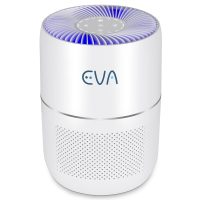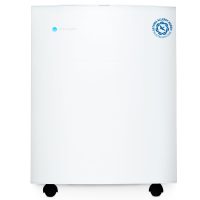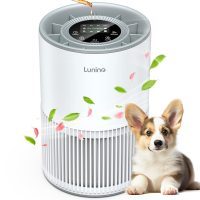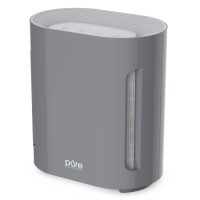
Best 10 Air Purifiers In India - 2025 Edition
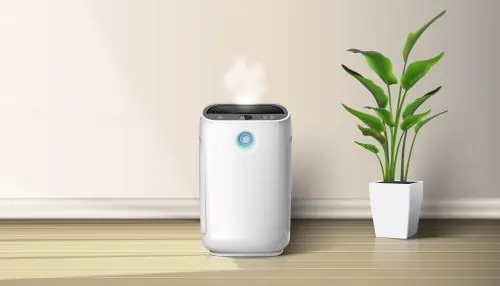
Selecting the ideal air purifier involves considering several factors, including your budget, room size, and specific air quality needs. Different models offer varying levels of filtration efficiency, noise control, and smart features.While some air purifiers specialize in removing allergens like dust and pollen, others are designed to eliminate odors, smoke, and even harmful gases. Advanced models also offer automatic sensors and app control, requiring minimal manual operation while maintaining clean and healthy air around the clock.
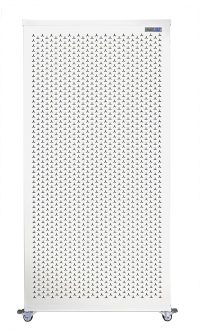
Smart Air Blast Mk II Air Purifier for Homes, Offices, Clinics & Hospitals, Coverage up to 1400 sq ft
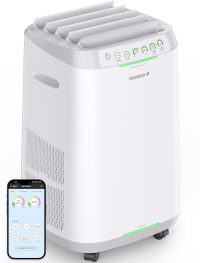
Nuwave OxyPure ZERO Smart Air Purifier, Large Area up to 2,002 Sq Ft, Dual 4-Stage Air Filtration
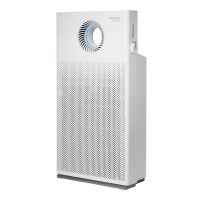
Coway Professional Air Purifier for Home, Longest Filter Life 8500 Hrs
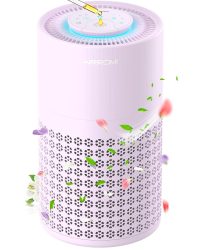
Airromi Air Purifier for Bedroom with True H13 HEPA 3-in-1 Filters
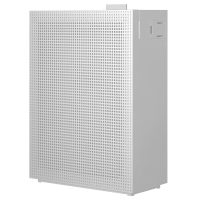
Coway Airmega 150 (AP-1019C) Air Purifier For Home, Longest Filter Life 8500Hrs
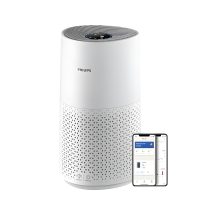
Philips Smart Air Purifier AC1715-Purifies rooms up to 36 m² -Removes 99.97% of Pollen
Types of Air Purifiers: A Complete Overview
When choosing an air purifier, it’s essential to understand the different technologies available. They primarily fall into automatic and manual/standard categories, with subtypes based on their filtration methods—HEPA, activated carbon, UV-C, ionizers, and hybrid systems.
🤖 Automatic Air Purifiers
Automatic air purifiers are designed for convenience and ease. Equipped with smart sensors and auto modes, they adjust fan speed and purification levels based on real-time air quality. Many models also come with app connectivity and display screens.
✅ Pros:
User-friendly with automatic air quality adjustments
Ideal for urban homes with fluctuating air pollution
Often feature smart controls or app integration
Low maintenance and easy to operate
❌ Cons:
Higher price due to smart tech
Less control over manual settings
🛠️ Manual / Standard Air Purifiers
These purifiers offer basic controls and fixed speed settings. They don’t auto-adjust, but provide reliable filtration when operated manually. Suitable for smaller spaces or users who prefer simplicity.
✅ Pros:
Budget-friendly and easy to use
Offers full manual control over settings
Ideal for stable environments with consistent pollution levels
❌ Cons:
Requires user to monitor and adjust settings manually
No smart features or automation
🌬️ HEPA Filter Air Purifiers
These use High-Efficiency Particulate Air (HEPA) filters to trap 99.97% of particles like dust, pollen, mold, and pet dander.
✅ Pros:
Ideal for allergy and asthma sufferers
Removes ultra-fine particles (0.3 microns)
Trusted and proven technology
❌ Cons:
Filters require replacement every 6–12 months
Doesn’t remove odors or gases
🌫️ Activated Carbon Air Purifiers
These purifiers absorb odors, smoke, and harmful gases (VOCs) using carbon filters.
✅ Pros:
Excellent for removing cooking smells and cigarette smoke
Works well alongside HEPA for complete filtration
Reduces household chemical fumes
❌ Cons:
Needs regular filter replacement
Ineffective on particulate matter alone
🧬 UV-C Light Air Purifiers
UV-C purifiers use ultraviolet light to kill airborne bacteria, viruses, and germs.
✅ Pros:
Offers microbial protection in addition to dust removal
Enhances hygiene in homes, hospitals, or clinics
❌ Cons:
Not effective on dust, smoke, or allergens alone
UV bulbs need periodic replacement
🌪️ Ionizer Air Purifiers
These release negative ions that attach to airborne particles, making them heavier so they fall to the ground or stick to surfaces.
✅ Pros:
Quiet and energy-efficient
Minimal filter maintenance required
❌ Cons:
Can release ozone, which may irritate sensitive lungs
Doesn’t trap particles in a filter
💡 Hybrid Air Purifiers (Multi-Stage)
These combine HEPA, activated carbon, UV-C, and/or ionizer technologies for all-around purification.
✅ Pros:
Covers dust, allergens, smoke, microbes, and gases
Best for heavily polluted urban environments
Offers balanced filtration with extra features
❌ Cons:
Higher price point
Larger and may need more space
🧠 Additional Features to Consider
When shopping for an air purifier, look for these useful extras:
Air Quality Sensor: Adjusts purification speed automatically based on real-time conditions
Filter Change Alerts: Notifies you when maintenance is due
Smart Connectivity: App control, scheduling, and usage tracking
Silent Mode: Ideal for bedrooms and nurseries
Coverage Area: Match purifier capacity to room size (e.g., 250–500 sq ft for most bedrooms/living rooms)
✅ Final Thoughts
Air purifiers come in various types, each serving different needs. If you suffer from allergies or live in a dusty environment, HEPA + Carbon filters are ideal. For complete protection from germs, odors, and fine dust, hybrid or automatic smart models offer the best solution.
Ultimately, the right air purifier depends on your environment, health concerns, feature preferences, and budget. Choose a model that suits your lifestyle and breathe cleaner, healthier air every day.
topreviewhome.com is a participant in the Amazon Services LLC Associates Program, an affiliate advertising program designed to provide a means for sites to earn advertising fees by advertising and linking to amazon.in.
© topreviewhome.com 2025 | All Rights Reserved.
